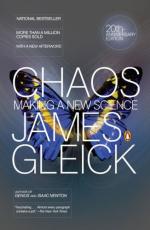
|
| Name: _________________________ | Period: ___________________ |
This quiz consists of 5 multiple choice and 5 short answer questions through Chapters 3-4.
Multiple Choice Questions
1. When was Steven Smale born?
(a) 1938.
(b) 1930.
(c) 1943.
(d) 1932.
2. In Chapter 1, "The Butterfly Effect," the author writes, "The Butterfly Effect acquired a technical name: sensitive dependence on _____________"?
(a) "Initial conditions."
(b) "Ideal conditions."
(c) "Controlled conditions."
(d) "Random conditions."
3. What did Foucault use as a way to demonstrate the earth's rotation, according to the author in Chapter 2, "Revolution"?
(a) A softball.
(b) A twenty-story high pendulum.
(c) A turkey baster.
(d) A six-foot wide magnifying glass.
4. In Chapter 2, "Revolution," the author writes, "Professional scientists, given brief, uncertain glimpses of nature's workings, are no less vulnerable to anguish and confusion when they come face to face with" _______________?
(a) "Cantor dust".
(b) "Turbulence".
(c) "Fractals".
(d) "Incongruity".
5. What is a natural science that involves the study of matter and its motion through spacetime, along with related concepts such as energy and force?
(a) Fluid dynamics.
(b) Physics.
(c) Thermodynamics.
(d) Physiology.
Short Answer Questions
1. Where is the National Weather Service headquartered?
2. For what company had Benoit Mandelbrot been working in economics, studying distribution of various incomes in the economy when he was invited by Houthakker to speak at Harvard?
3. What mathematical theorem states that every simply connected, closed 3-manifold is homeomorphic to the 3-sphere?
4. According to Gleick in Chapter 3, "Life's Ups and Downs," what will lead to an increased, steady state in the idealized population?
5. James Yorke is credited with creating what term in reference to science?
|
This section contains 253 words (approx. 1 page at 300 words per page) |

|




